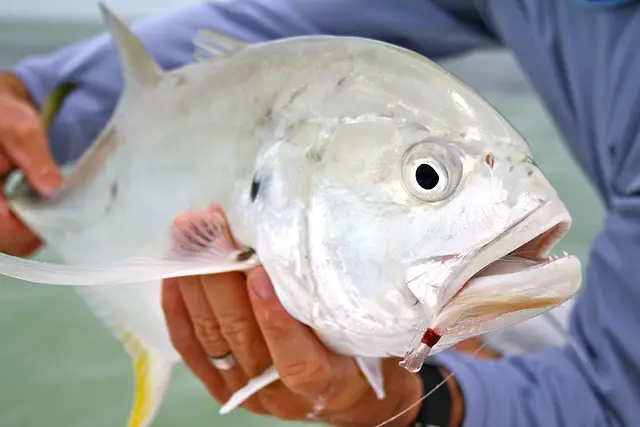Razor clams are often some of the easiest, most reliable clams to dig. They are found in the sand along the ocean floor between tides and can be up to 2 inches across! They are usually found in areas where there is little wave action and channeling. Their neck has a large opening, but the shell over their body is very small.
Razor clams can be identified by two parallel ridges on their “neck” (the part that exists outside of the shell). The rest of the clam’s body sits inside the protective shell that it uses to dig in the sand.
Razor clams have very powerful foot muscles that allow them to stay securely buried in wet sand while being pounded by crashing waves. These muscles only relax when the clam is completely covered with water, so once a razor clam has dug itself into the wet sand, it can be very difficult to remove it.

Table of Contents
For razor clam digging you will need:
A shovel or spade A bucket (not pictured) Something to store your clams in! Bucket can be substituted with a mesh bag. A permanent marker Optional – water for washing sand off the clams before taking them home (bucket, hose, etc.) Optional – measuring device (tdifficult in the dark)
Surgical gloves A bucket or something to store your clams in. Bucket can be substituted with a mesh bag.
A permanent marker Optional – water for washing sand off the clams before taking them home (bucket, hose, etc.) Optional – measuring device (tape measure is difficult in the dark).
Razor clams are usually found buried in the sand. To find them, you will need to walk along slowly through wet sand (NEVER dig in dry sand). Make sure the sand is wet by checking by feel rather than sight – if it feels cool and damp, it’s a good place to look for razor clams.
I Found A Clam!
Once you find a clam, carefully start digging it up with your shovel. Once the clam starts to surface, work on loosening it from the bottom of the hole so that you can lift it out without pushing too much sand back into the hole. If the clam is lodged in a small hollow in the sand, don’t worry about filling the hole back in just yet – just re-dig a big enough space for you to work with. If the clam is deeply buried, dig your shovel underneath it and use the spade end of the blade to lift it up while you pull backwards with your other hand. It may take some strength, but if you’ve dug deep enough, you should be able to pull it free.
You Can Do It, Kiddo! If you’re small and not very strong, try digging in a smaller space and/or sticking your shovel in sideways so that the blade supports some of the weight of the sand. You may also want to dig several less-deep holes in one area to increase your chances of finding a clam.
Here’s one! There are two ridges on the neck, where it meets the sea floor. The rest of the body sits in its shell, under water. To dig this one up, I stuck my shovel underneath it and used the spade end to lift it out of the hole while holding onto the neck with my other hand.
Here’s one! One of the ridges on its neck is visible from this angle.
Cleaning Caught Clams When you get home, pour your clams into a bucket of water and rinse them off. This will remove most of the sand that may be clinging to their exterior. Use a hose or the bathtub if you don’t have a bucket big enough to hold them.
Once they are mostly clean, transfer them on top of some newspaper to dry overnight. This will allow any tiny bits of sand that might still be lodged inside their hinge and ligaments to fall out before cooking them.
Awww! They curl up in a protective ball when they’re scared.
Cleaning Razor Clams TIP
If you don’t want to try to deal with cleaning these yourself, ask your fishmonger if they will clean them for you when ordering the clams! Some fishermen remember to do this and others don’t, but it’s certainly worth a shot.
Once they are mostly clean, transfer them on top of some newspaper to dry overnight. This will allow any tiny bits of sand that might still be lodged inside their hinge and ligaments to fall out before cooking them.
There are few different ways to cook razor clams, most commonly they are steamed or roasted in foil with butter. They are generally considered to be a delicious delicacy if you can get your hands on some.
What do you need for razor clamming?
- An awesome shovel
- A bucket or mesh bag to store them in
- Optional – a measuring device for finding the right size clams
- Optional – water for washing sand off the clams before taking them home (bucket, hose, etc.) Optional – measuring device (tape measure is difficult in the dark).
How deep do razor clams burrow?
Razor clams live from between 1 ft and 3 ft under the sand. To find them, you will need to walk along slowly through wet sand (NEVER dig in dry sand). Make sure the sand is wet by checking by feel rather than sight – if it feels cool and damp, it’s a good place to look for razor clams.
If you feel your feet or toes being nipped by clams, STOP IMMEDIATELY! Razor clams have very powerful mouthparts that will permanently damage your feet unless you remove the clam from the area immediately. To dig one up, use a shovel to carefully lift it out of the ground. Once they are exposed, it is easy to grab them with your hand or, if necessary, clamp down on the shell with a towel and pull.
If they were dug up by mistake, return them to their burrow. They will provide nutrients for the soil if left where they are!
How do you collect razor clams?
To find them, you will need to walk along the wet sand of the beach slowly. Make sure the sand is damp by checking by feel rather than by sight – if it feels cool and damp, it’s a good place to look for razor clams.
If you feel your feet or toes being nipped by clams, STOP IMMEDIATELY! Razor clams have very powerful mouthparts that will permanently damage your feet if you don’t remove the clam from the area immediately. To dig one up, use a shovel to carefully lift it out of the ground – once they are exposed, it is easy to grab them with your hand or, in some cases, clamp down on the shell with a towel and pull. Do note that some people’s shells are more fragile than others – if you have trouble getting yours open, don’t continue to force it!
If they were dug up by accident, return them to their burrow. They will provide nutrients for the soil if left where they are! Don’t forget to rebury them.



